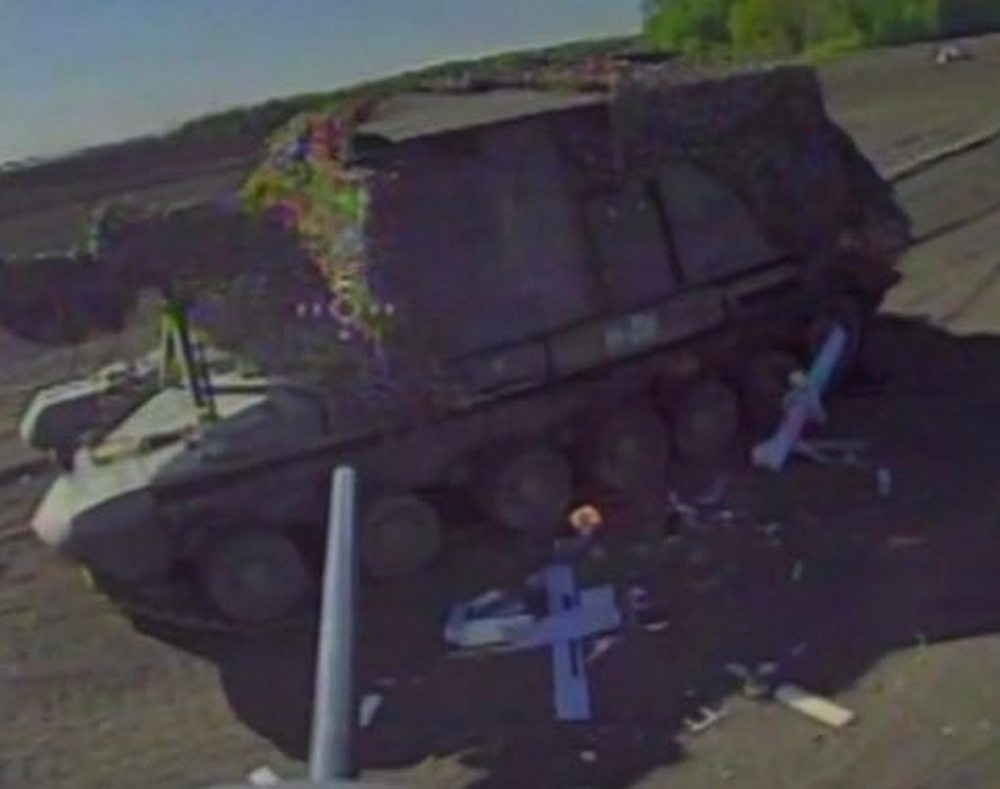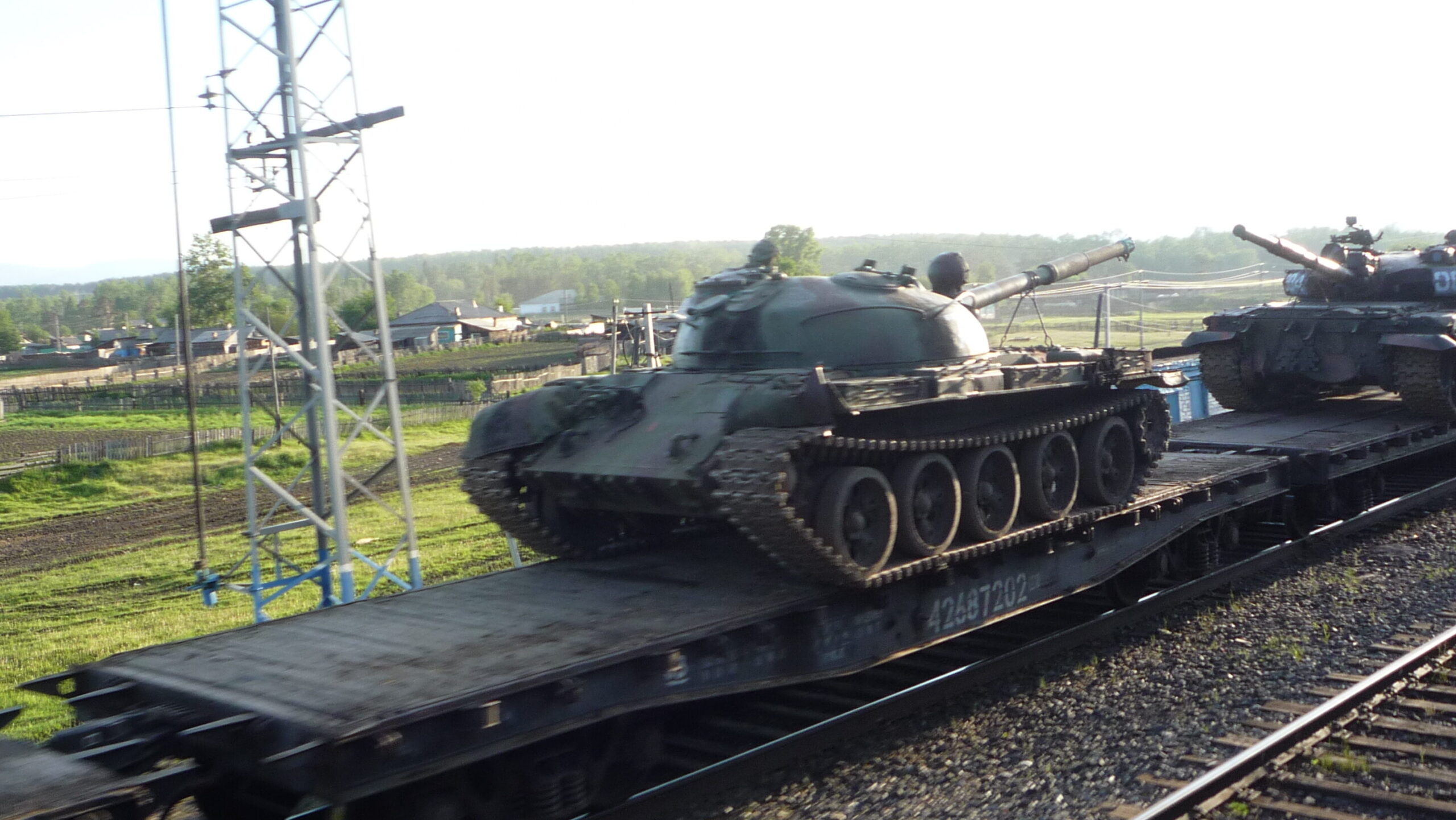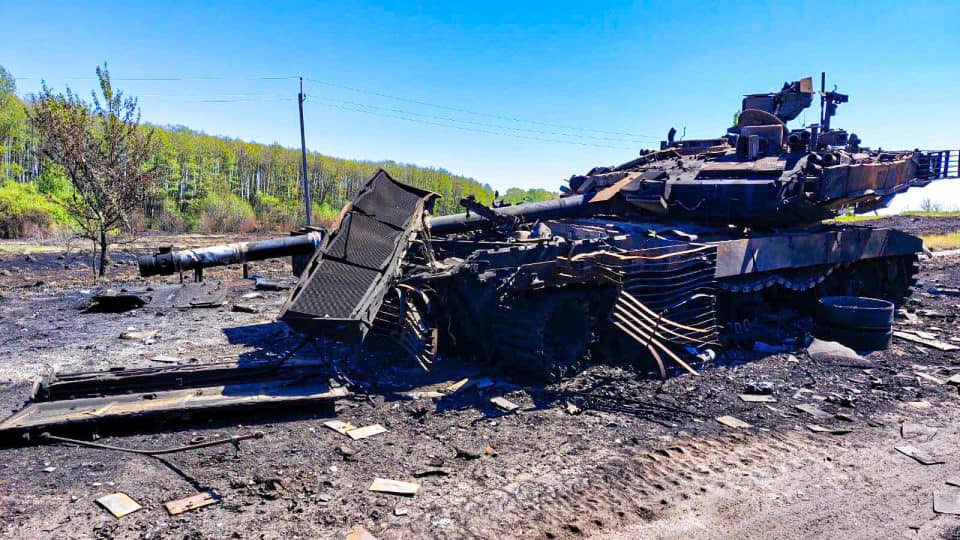A special series by defense journalist David Axe, exploring how Ukraine can win the war against Russia through technological innovation:
World War I, the political crisis of 1917 and the ensuing five-year civil war embarrassed and bloodied the Russian army. With hundreds of thousands of soldiers dead and decades of doctrine totally discredited, the colonels and generals in the reconstituted Soviet army faced a daunting task in the mid-1920s: to conceive of a new way of war for a new era.
A century later, Ukrainian doctrine and technology—urgently crafted as a Russian force bore down on Kyiv—are dismantling the ideas and equipment that emerged from that defining period in Russian military development.
The Ukrainians are swiftly de-mechanizing what was the world’s leading mechanized army. If they can finish what they’ve started, they could render the Russian army immobile … and incapable of major offensive action.
To be fair, immobilizing the Russian army isn’t exactly the same thing as defeating the Russian army. But it may be the last step before that final defeat. This is the first feature in a series explaining what Russia’s defeat, and Ukraine’s victory, could plausibly look like.
A century of mechanized warfare meets its match
Protected movement is central to the Russian way of war. Taking the pulse of the politics in Moscow and eyeing the vast landscape stretching from the Russian capital toward the capitals of Europe, Soviet thinkers in the 1920s devised new doctrine for mobile warfare on battlefields dominated by artillery, where to slow down was to die in place.
This new Soviet army needed to maneuver. Fortunately for the army, “the forced industrialization of the Soviet economy began to produce weaponry and equipment necessary to create a Red Army force structure capable of conducting operational maneuver—namely, a mechanized and armored force,” Col. David Glantz wrote for the US Army’s Soviet Army Studies Office in 1990.
“The ensuing motor-mechanization program of the Red Army propelled Soviet military concepts and forces into a new technological age,” Glantz added. The age of the armored vehicle.

Try and try again! Ukraine’s AI drones defeat Russian electronic warfare in new Kursk offensive
But no epoch lasts forever. Outgunned by the Russian army and on the cusp of losing everything in the spring of 2022, the Ukrainian military embraced a new century-defining technology: the drone.
From tanks to scooters: Russia's forced demechanization
And now Ukraine’s drones are destroying so many Russian vehicles so fast that entire Russian regiments, each with a thousand or more troops, have begun riding into battle on Chinese-made motorcycles and all-terrain vehicles—golf carts, basically—as well as old Soviet compact cars, trucks, and vans.
The most desperate regiments have even equipped their reconnaissance and assault troops with rechargeable electric scooters—the kind a Russian pedestrian can rent for a few rubles for his commute to work in Saint Petersburg or Moscow.
This de-mechanization—the wholesale destruction of the armed and armored vehicles that once moved hundreds of thousands of Russian troops and their supporting firepower across great distances, quickly and under protection—is tearing up an entire chapter of Russian military history. Rendering obsolete the concepts, training and hardware Moscow is counting on to achieve a kind of victory in Ukraine.
Russia widened its war on Ukraine in February 2022 on the backs of tens of thousands of armored vehicles: heavily-armed, thickly-armored tanks led lighter, troop-carrying infantry fighting vehicles. Behind them trailed armored trucks and lighter tracked support vehicles. Even the rearmost vehicles—howitzers and mobile air defenses—traveled on thick tires or metal tracks and had some degree of armored protection.
It was this horde of mobile metal that nearly reached Kyiv in the heady first few weeks of the wider war. But it advanced too quickly and too far for its supply lines and got hit on its flanks by Ukrainian infantry packing shoulder-fired Javelin anti-tank missiles. More ominously for the Russians, their columns came under fire from above—by Ukraine’s small force of Turkish-made TB-2 drones firing tiny precision munitions.
Can Ukraine win through the drone revolution?
It took a few days after the shock and violence of the initial Russian attack on 24 February 2022 for the TB-2 operators to prepare their 640-kg, propeller-driven unmanned aerial vehicles to fly. Once they did, the drones opened an ever-widening robotic offensive.
By 20 March, foreign observers had confirmed—via photos and videos captured by the drones themselves as well as by ever-present smartphones—nearly 60 tanks, air-defense vehicles, supply trucks, and even locomotives that had fallen prey to TB-2s.
It was a sign of things to come. The Russians retreated, consolidated their hold on Ukraine’s easternmost and southernmost oblasts—and then retreated again as Ukrainian brigades counterattacked in the fall of 2022.
Ukraine’s much-ballyhooed southern counteroffensive in the summer of 2023 got mired in dense Russian minefields and withered for a want of infantry.
The Russians counterattacked in early 2024 and, taking advantage of the first spasms of American recalcitrance that starved Ukrainian units of urgently needed artillery ammunition, advanced tens of miles through Avdiivka toward the fortress city of Pokrovsk.
The Ukrainian incursion into western Russia’s Kursk Oblast between August 2024 and February this year was an expensive and ultimately fruitless gambit on the part of the generals in Kyiv.
But elsewhere along the 1,100-kilometer front line, the Russians' momentum dramatically slowed as 2024 turned into 2025 and the wider war entered its fourth year.
Between September and March, Russian forces captured around 3,600 square kilometers of Ukraine—expanding their occupation zone from 110,000 square kilometers to 113,600 square kilometers. This in a country of 603,700 square kilometers.

Slower Russian advances
Since Ukraine’s 2022 counteroffensive liberated 4,200 square miles of occupied territory, Russia has consistently controlled slightly less than 20 percent of Ukraine. Any Russian gains since then have been marginal, and have come at the cost of hundreds of thousands of casualties and thousands of increasingly difficult-to-replace vehicles.
“Russia does not have the military power to seize the rest of Ukraine,” the Institute for the Study of War in Washington, D.C. concluded.
Ukraine’s drones are a main reason why. The small force of TB-2s didn’t survive past 2023, but Ukraine’s fast-growing defense industry—led by tech-savvy entrepreneurs, spread out across small workshops to add resilience and boosted by periodic injections of cash from Ukraine’s allies—replaced the few dozen multi-million-dollar TB-2s with literally millions of tiny first-person-view drones, each weighing just a few pounds and costing a few hundred dollars.
Controlled via radio or fiber-optic cable by a headset-wearing operator who sees what the drone sees, the warhead-clutching FPVs have utterly devastated the Russian war machine.
It’s hard to say how many of the roughly 17,000 armored vehicles the Russians have lost since February 2022 were hit by drones. But it’s no exaggeration to say that, right now, Ukrainian FPV drones are the main killers of Russian troops and wreckers of Russian vehicles.
The Russians have drones, too, of course—but they’re less numerous, less reliable, and more susceptible to the relentless radio jamming that smudges the entire electromagnetic spectrum in and around Ukraine.
“Ukrainian drone technology is so far ahead, I do not think Russia has any realistic potential to catch up,” said Andrew Perpetua, an independent analyst who tallies Russian and Ukrainian losses and who might analyze a hundred or more videos of battlefield drone strikes every day.
Tactical failure: Russia's armored columns exposed
A Russian assault group that attacked Ukrainian positions west of Andriivka in eastern Ukraine on or before April 3 was unusually blessed with armored vehicles, but came to a typically bad end. Ambivalently led, it moved out in broad daylight and without the concealment offered by bad weather or smoke generators, advancing along a main road in a tightly packed column of at least a dozen armored vehicles carrying scores of infantry.
Trending Now

Russians fuel motorcycles for one-way attacks on Ukrainian positions in Donetsk Oblast
When the lead vehicle was hit, the trailing vehicles piled up behind it. Their passengers bailed out and came under fire themselves—and soon the whole assault collapsed as Ukrainian artillery and drones knocked out vehicle after vehicle.
Swarms of flitting drones hunted down the terrified survivors of the initial ambush.
“Russia, in theory, could have evolved,” Perpetua explained. Instead, they’ve stubbornly rolled virtually their entire stock of armored vehicles—once the biggest in the world—across the drone-patrolled no-man’s-land, and squandered it.
Numerically speaking, nearly every vehicle the Russians went to war with in February 2022 has been destroyed.
Squeezed by sanctions, Russian industry produces just 1,000 or so new armored vehicles a year, according to Jakub Janovsky, a member of the Oryx intelligence collective. The roughly 3,000 new armored vehicles Russia has built obviously can’t fully replace the 17,000 vehicles and other heavy equipment it has lost.
Starting in late 2022, the Russians began to make good the balance of their losses by pulling older Cold War-vintage vehicles out of long-term storage.
In tapping the reserves, the Kremlin deployed the best-maintained vehicles first—upgraded BMP fighting vehicles and T-62 tanks from the 1980s, for starters. But these were also too few, so the Russians reached deeper, and reactivated MT-LB armored tractors from the 1970s and T-55 tanks from the 1950s.
They too ran out. Now, the old storage yards are mostly cluttered with junk.
“Russia still appears to have a lot of equipment in storage, but a lot of what remains is in a terrible state—either beyond repair or needing to be completely rebuilt,” Janovsky explained.
“So there will continue to be a stream of reactivated repaired equipment, but as the state of the vehicles in storage they have to work with gets worse and worse, those repairs will—besides being very costly—require more parts and more time, reducing the number of vehicles that can be reactivated each month.”

Regiments with no rides
As Ukrainian drones proliferated and Russian losses piled up, gaps opened in the Russian force structure. Mechanized regiments de-mechanized, making them decreasingly relevant to Russian attempts—however ill-conceived as the war ground on—to break through Ukrainian lines.
The ATVs got wiped out. Next, the Russians began deploying inexpensive motorcycles.
The Russians adapted, in a way. In 2023, the Kremlin bought thousands of Desertcross ATVs from a Chinese firm for $20,000 apiece and sent them to the front to replace some of the million-dollar tanks and BMPs the front-line regiments no longer had in abundance. But a 3,500-pound ATV with an open top is a poor substitute for a 40-ton tank with inches of steel armor.
A 17 April assault on Pokrovsk involved around 150 bike troops, few of whom survived to describe how foolhardy it is to ride a motorcycle through a cloud of explosive drones. While feeding thousands of bikes into the hungry maw of Ukraine’s drone defenses, the Russians also began sending troops into battle in old Lada compact cars, Bukhanka vans, and GAZ-69 off-road trucks.
Even with extra protection in the form of bolt-on cages meant to block incoming drones, the civilian cars, vans, and trucks are extremely vulnerable.
“Civilian vehicles are better than walking,” Janovsky said, “but will obviously not provide any protection or fire support, so assaults with them instead of proper [armored fighting vehicles] will be more costly and more likely to fail.”

Ukraine destroys Russia’s motorcycle meat waves daily — but Moscow only needs one success
The accelerating downward spiral
If the drone-induced de-mechanization of the Russian army is a downward spiral, it’s an accelerating one as each successive generation of vehicle—from modern armored vehicles to surplus armored vehicles to modern civilian vehicles to old civilian vehicles—proves even more vulnerable to drones than the previous one.
As long as factories are up and running, Russia will never actually run out of vehicles for its regiments in Ukraine. “If Russia exhausts some equipment models, it will at first be able to replace them with less optimal equipment,” Janovsky explained. “After that, it would have to either scale down the use of that remaining type of equipment or accept that its units will, over time, have a deficit due to losses.”
That is, more regiments will start walking into battle as a matter of course. “I would expect that process to start around late 2025,” Janovsky said.
It should go without saying that walking into a swarm of drones is a nightmarish prospect for the individual Russian infantryman. According to Janovsky, “assaults would be far more likely to fail and cost far higher casualties.”
The end of Russia's mechanized doctrine?
It’d be a nightmare for the generals and civilian leaders in Moscow, too, as they watch their chances of any meaningful victory slip away with the last large stocks of Russian armored vehicles.
Russia cannot win as long as Ukraine’s drones hold the line.
Since the 1920s, the Russian way of war has ridden on tracks and wheels piled with steel armor. But it rode into a conflict increasingly shaped by tiny explosive drones—and now it’s being dismantled by those same drones.
Russia cannot win as long as Ukraine’s drones hold the line. Whether the Ukrainians can take advantage of this impasse to achieve something they can reasonably call “victory” is a separate question—one this series will attempt to answer.
Behind every drone transforming warfare is an innovator who needs visibility.
Help us launch the David vs. Goliath defense blog to amplify Ukraine's drone revolution
The $500 Ukrainian drones dismantling Russia's war machine deserve global visibility. Our upcoming platform will connect these ingenious Ukrainian engineers with expertise, components, and funding they urgently need. From FPV drone workshops to next-generation defense startups, we'll help accelerate the innovations that are changing modern warfare.
Become a Patron – Help us show the world how Ukrainian ingenuity turns the tide of war.


